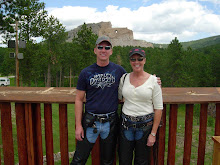I've always been interested to read about "bathtubbing" historical actions - whether that be a single battle or a campaign. "Bathtubbing" is simply scaling down the base unit size so that the army sizes can be something manageable for playing a game. This can distort ground scales if that sort of thing bothers you (it doesn't bother me), or can be taken too far (this figure is 12th Corps!).
I've been doodling around thinking about game scales and unit representation lately.
Typical horse and musket era games have basic infantry units that range from battalion to regiment/brigade. Gamers like the battalion scale because it gives them all of the tactical decision and color they are used to, and the brigade scale because they can play "big battles".
I'm thinking one set of rules will work for a wide variety of unit/game scales. Let's look at the level of command and what that represents.
In most multiplayer games, one player will typically assume more of (if not all of) the overall army commander's role. This will usually mean that he decides the overall plan for the army. In my experience, this same player will wear two hats - he'll also command smaller commands in the army so he gets to play the tactical game as well.
If we look at typical game scales, some interesting things happen. I'll use Field of Battle (2 Ed) as my example. A battalion is the basic game unit of around 500 to 1000 men (although counting men in the unit is not a part of the rules). Players typically will command 3 to 12 units in multiple command groups, and deploy those units in a variety of tactical formations (line, column, route, skirmish, square, etc.).
The above game will typically represent somewhere around 20,000 or so men per side - say a Corps or so per side.
So - can the same rules be used to represent smaller AND larger battles?
Absolutely!
Let's say you want to play a small game (a large brigade or two up to a division per side) OR a multi-Corps game.
Use the same rules! Simply adjust the figure/man scale and you're ready to go. For small games, I'd use something like 150 to 300 men per infantry unit, and for large Corps+ games I'd use something like 2500 to 3000 men per unit. So - if you're playing a War of 1812 battle that had 4000 Americans vs. 3000 British, you'd end up with somewhere around a dozen American infantry units vs. 10 British units; if you were playing an ACW game of 80,000 Federal vs. 60,000 Confederates, use the bigger scale and you've got around 26 Federal brigades vs. 20 Confederate brigades.
Use the same rules! Ground scale is somewhat elastic and can be abstracted by considering what is being represented in the unit. If a unit is a Brigade, that Brigade is composed of multiple battalions, in a variety of formations. A Brigade in "Line" is a Brigade that is deployed in more width than depth; a Brigade in "Attack Column" is deployed in more depth than width. The space occupied by any of these units on the table is just the core of the area occupied by the units - there is a cloud of skirmishers, a movement in space of various components of the units (whether they be battalions or brigades). If you consider the abstractions in unit representation as you scale up, its not hard to keep the same ranges in the game. Long firing ranges are just the fire being issued from extremem forward elements in the brigade, or skirmishers in the battalion scale game.
EVERYTHING doesn't have to be represented on the tabletop! That's the quickest way to painfully slow and dreary games. At the end of the day, I'm willing to bet that a multi-Corps game using the above will feel just as "historically accurate" as a specialized grand tactical set of rules.
But that's just me.
The next update will include photos from the last game.
Subscribe to:
Post Comments (Atom)

No comments:
Post a Comment